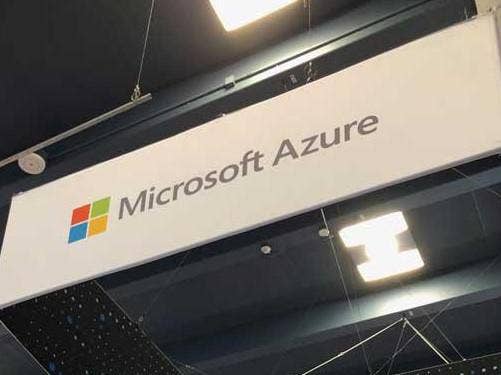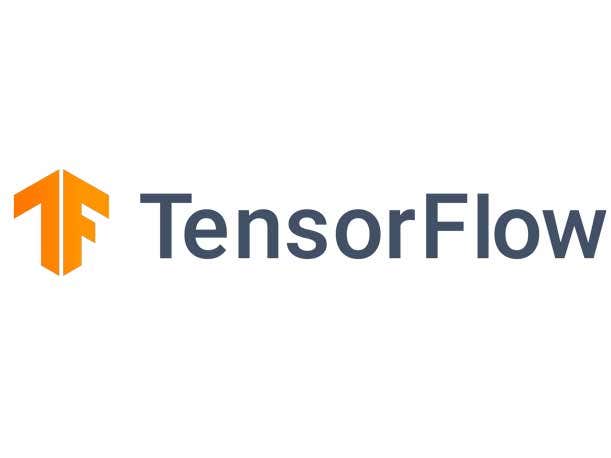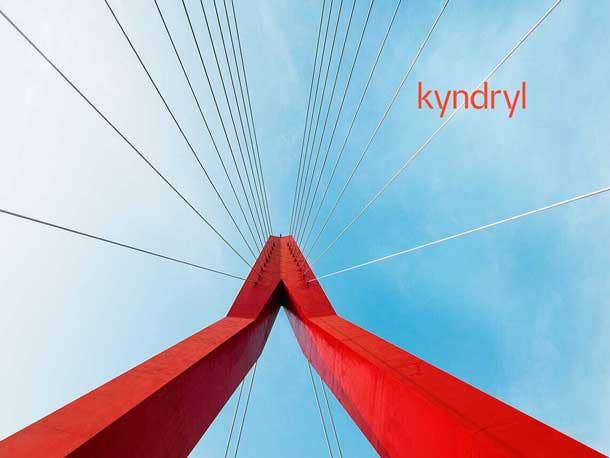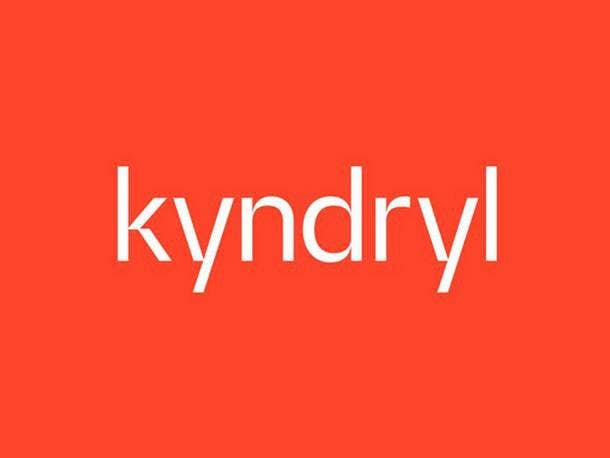Kyndryl Cloud Leader On AWS, Azure, Google And IBM ‘Pivot’
‘CIOs went into cloud with that cost-cutting mindset. They’re finding that not only are they not saving money, the sprawl and the expense on cloud is going through the roof,’ Kyndryl’s Global Cloud Practice Leader Harish Grama tells CRN.

As organizations of all shapes and sizes hastily flocked to the cloud over the past several years, many are now raising their eyebrows as cloud costs are going through the roof.
Kyndryl, the $17 billion IT services behemoth spun out of IBM, is helping countless customers implement and manage a cloud environment that optimizes cost, drives innovation and helps businesses grow thanks, in part, to partnering with cloud leaders Amazon Web Services, Microsoft Azure and Google Cloud.
“CIOs went into cloud with that cost-cutting mindset. They’re finding that not only are they not saving money, the sprawl and the expense on cloud is going through the roof,” said Harish Grama, Kyndryl’s global cloud practice leader, in an interview with CRN. “In their haste to get to the cloud, they’re not doing it right.”
[Related: VMware vSphere Vs. AWS Outposts Vs. Azure Stack: Private Cloud Face-Off]
Grama is a longtime IBM cloud executive who joined Kyndryl after the company was spun-out of IBM in 2021. He said Kyndryl’s cloud strategy is vastly different from IBM’s in 2023.
“As we spun off into Kyndryl, one of the first things we did was we said, ‘IBM technologies are good, but the bulk of cloud, especially, is everywhere else. So we have to be premium partners with all the hyperscalers,’” said Grama. “And 18 months into this, I’ve now got over 30,000 people with hyperscalers certifications, for example. Whereas coming into Kyndryl in November of 2021, we had close to zero. So it really is opening up the aperture to work beyond IBM technologies.”
AWS, Google, Microsoft Azure
Kyndryl, which has around 90,000 employees, is now a top global partner for the three cloud market share leaders: AWS, Microsoft Azure and Google Cloud. These three cloud leaders, combined, own approximately two-thirds of the global cloud infrastructure services market.
“The commodity stuff—which is infrastructure, compute, storage, network—they all three do it well,” he said. “Now, once you start to go further up the stack, or what people call platform-as-a-service, where you also incidentally get into things like lock-in, etc. That’s where you have to be very careful.”
In an interview with CRN, Grama discusses what AWS, Azure and Google Cloud do well, why cloud costs have become out of control, and Kyndryl’s strategy to help customers find their cloud nirvana.

What are AWS, Azure and Google Cloud doing right in 2023, and what could they be doing a little better to help partners?
They’re doing a lot right. They provide developers a way of instantiating a development environment, quickly spinning up really innovative code that helps the business, and then rapidly deploy it. Then in the cloud paradigm, the developer is the operator and they continue to operate it. So the innovation, the automation, the rapidity of migration, the security, the compliance that they afford—they’re doing all of that really well.
They excel in the domain that they play in, which is, ‘How do I set up all of these things? Bring innovation in truckloads and automate all of it? Then make it easy to consume.’ That is what they specialize in.
They don’t live in the world that our customers live in or that we live in.
Our world is, ‘The world is not a vanilla place. It’s a brownfield place, not a greenfield.’ [Customers] have these applications that have been running their enterprise for decades. How do they start to leverage the cloud for all the things that [cloud service providers] are building?’ So that’s where we shine. Because we have the experience, we have the processes, we have the tools, we have the IP, and we’ve got the history and institutional knowledge of all of this.
So each player is excelling at what they do best.
We at Kyndryl are the trusted partners that says, ‘Okay, don’t rush into this because we’ve seen this movie, it doesn’t end well. Let’s do it a slightly different way. Let’s use this cloud for this particular use case, that cloud for that use case, because we’ve just seen that it’s smoother and it works better.’ It’s each entity in this ecosystem playing their position on the field, if you will, that makes it super important for that whole thing to work well.

Breaking it down, what does Azure do particularly well?
The commodity stuff—which is infrastructure, compute, storage, network—they all three do it well. Now, once you start to go further up the stack, or what people call platform-as-a-service, where you also incidentally get into things like lock-in, etc. That’s where you have to be very careful. Clearly, Azure and AWS are the largest providers with Google being third.
The reason why Azure even beats AWS in being the size of the provider that it is, is because everybody has Microsoft Office—everybody has Office. One of the first things is, ‘Hey, Microsoft’s not even building licensed software on Office anymore, you have to go to Office 365. So you’re already on your cloud journey there when you start to work with your Office programs.’
So Microsoft starts in from there. Then people say, ‘I’ve already got my investment with Microsoft because of this, I may as well just continue it.’
Because every time you want to consume a new cloud: you have to get your guardrails built exactly right, you have to train your developers, etc. Adopting one cloud sucks the oxygen out of the air. So trying to do two, three and four is really, really hard. Even people that say that they’re multi cloud, you’ll typically see them use one major cloud, and then maybe they have some of the others.

What about Google and AWS?
Obviously, Google is all about their big data and AI and their TensorFlow—people just love it.
This big bank that I was in before, the retail side of the bank had 20 petabytes of call center data that was just lying dormant. We had to pick one cloud to go and start mining some intelligence from 20 petabytes of dormant customer call center data.
We picked Google because they had the best tools. They had the specialized hardware and TPU. They had a practice that they built around it with [IT services partner] KPMG, because Google’s not in the services market. So we found Google was a really sweet spot for us there.
Then if you want the sheer breadth of services, an ARM provider that does everything—that’s AWS for you.
AWS pitches it like, ‘What do you want? Because we have it. … You want TensorFlow. I got it. You want this thing from Apache? I got it.’ So it’s a very different way of approaching the market. It’s like ‘Pick what you want. I got it and I’ll support you.’

What has changed for Kyndryl, formerly known as Global Technology Services (GTS), since leaving IBM?
Our strategy has really changed. When we were part of IBM, we were known as GTS and we filled a particular role within the larger IBM. That role was to manage infrastructure only and manage infrastructure more from a perspective of IBM technologies. It was just the strategy, right or wrong.
As we spun off into Kyndryl, one of the first things we did was we said, ‘IBM technologies are good, but the bulk of cloud, especially, is everywhere else. So we have to be premium partners with all the hyperscalers.’ So that’s the first thing we did.
And 18 months into this, I’ve now got over 30,000 people with hyperscalers certifications, for example. Whereas coming into Kyndryl in November of 2021, we had close to zero. So it really is opening up the aperture to work beyond IBM technologies.
Then equally, it is to enable the ecosystem of our customers. Because you’re not going to rewrite everything from scratch and consume everything cloud native. People have existing investments in licensed software, on-prem software, etc.—they want to take that to the cloud. Whether it be Hadoop, or it be Kafka, or whoever your favorite vendor is. So we partnered with those guys as well because we want to help you on your journey to your cloud.

That seems to be a pretty large pivot?
Yes. And also, we don’t want to just throw bodies at it. We’ve got serious IP that we’ve built that actually has these inference engines, the data lakes, the models, the AI engine, etc. that can give you intelligence and automated intelligence where we can do things automatically. Of course, we’re a services business so it’ll always come with our people.
That’s the pivot we’ve really made—from being purely an only-people business, not really leveraging IP, having only IBM skills, and not really working with other hyperscalers and the ecosystem—into what we are now.
Now we’re not just managing infrastructure. We’re doing advising and consulting, to implementation, to day-two operations, to optimization—so we’re a full service shop now.
Whereas previously at IBM, we were just part of a whole. Those are the big changes since we became Kyndryl. Our cloud business is growing really well. I can’t give you numbers, unfortunately, because we don’t break it out. But we have some very, very good growth there.

Cloud costs are getting out of hand for many companies in 2023. Why is that?
People went into the whole cloud journey with purely the cutting-costs attitude. And cloud is not really meant for that in many cases.
In some cases it is, but the cloud truly gives you a much more resilient architecture that’s more secure; gives you access to innovation that you wouldn’t have if your buying licensed software and do it on-premise; and it also allows you to apply new business models and reach new customers. Therefore, raising your top line which gives you a better bottom line.
However, CIOs went into cloud with that cost cutting mindset. They’re finding that not only are they not saving money, the sprawl and the expense on cloud is going through the roof. In very many cases, they’re not even seeing the other benefits that I talked about of raising your top line. In their haste to get to the cloud, they’re not doing it right. People are doing missteps.
There are some people that do it well, but even those guys when they look at the cost of cloud say, ‘As long as it doesn’t mushroom into something that’s unmanageable, it’s good.’
It’s a discipline that their in-house teams use with FinOps to say, ‘Am I rightsizing my investment? Am I using the right technologies for the right things? If one particular thing, for example, containers in AWS has gone through the roof—what are the other issues that it brings forward other than just costs? Of course cost is a big issue, but is my surface area way too big for a security attack? Am I going to start attracting the no-so-good people, etc.’ So there is a discipline that gets factored in that right-sizes what are you using, where are you using, and why are you using it.

How is Kyndryl helping customers with their cloud costs and optimization?
It starts with our consultants and advisors setting up the cloud [code of conduct]. It’s working with customers to actually implement the re-architecture of the applications, the modernization of their applications to actually do it.
Then automate the building of landing zones and clouds. If it’s a hybrid architecture, many of which are, how do you get it right on clouds and on-prem, or on a private cloud.
Then we do day two operations after that, ‘OK, I’ve got it on. Now let me manage it for you, patch it for you, secure it for you.’ Even though these are cloud applications: number one, a lot of them are hybrid. Number two: even if they’re entirely in the cloud, you’re not rewriting something that’s been running an enterprise for decades completely from scratch—you’re refactoring it, you’re containerizing it, you’re modernizing it. We have the expertise, the tools, the processes, the people, and the institutional knowledge to say, ‘Look we can manage that for you from a day two perspective.’
Then, last but not least, it’s the ongoing optimization—it’s never one and done. You want to go back to the development cycle and you want to rewrite the app and do it slightly better this time.
We look at certain things like FinOps: are you spending too much on one particular area, is a trending in the right direction? We’ve got a lot of this metadata and artificial intelligence engines and we train models, so we can predictably tell you that something is going the wrong direction.
We also do AIOps. If some queue is filling up too rapidly somewhere, we’ll flag it. If we find that something seemingly innocuous is happening, but just because we know from training our models that that is not necessary innocuous and may come back and bring your production system down—that’s AIOps.
Customers always zero in on the FinOps piece, but the actual optimization of applications running on clouds is FinOps, its AIOps, its DevSecOps, it’s even compliance operations. … So it really is a combination of all of that. We can really help customers with the whole thing—all the way from disposition your applications, modernizing it, setting up a center of excellence, automating the deployment, and then everything around optimization.